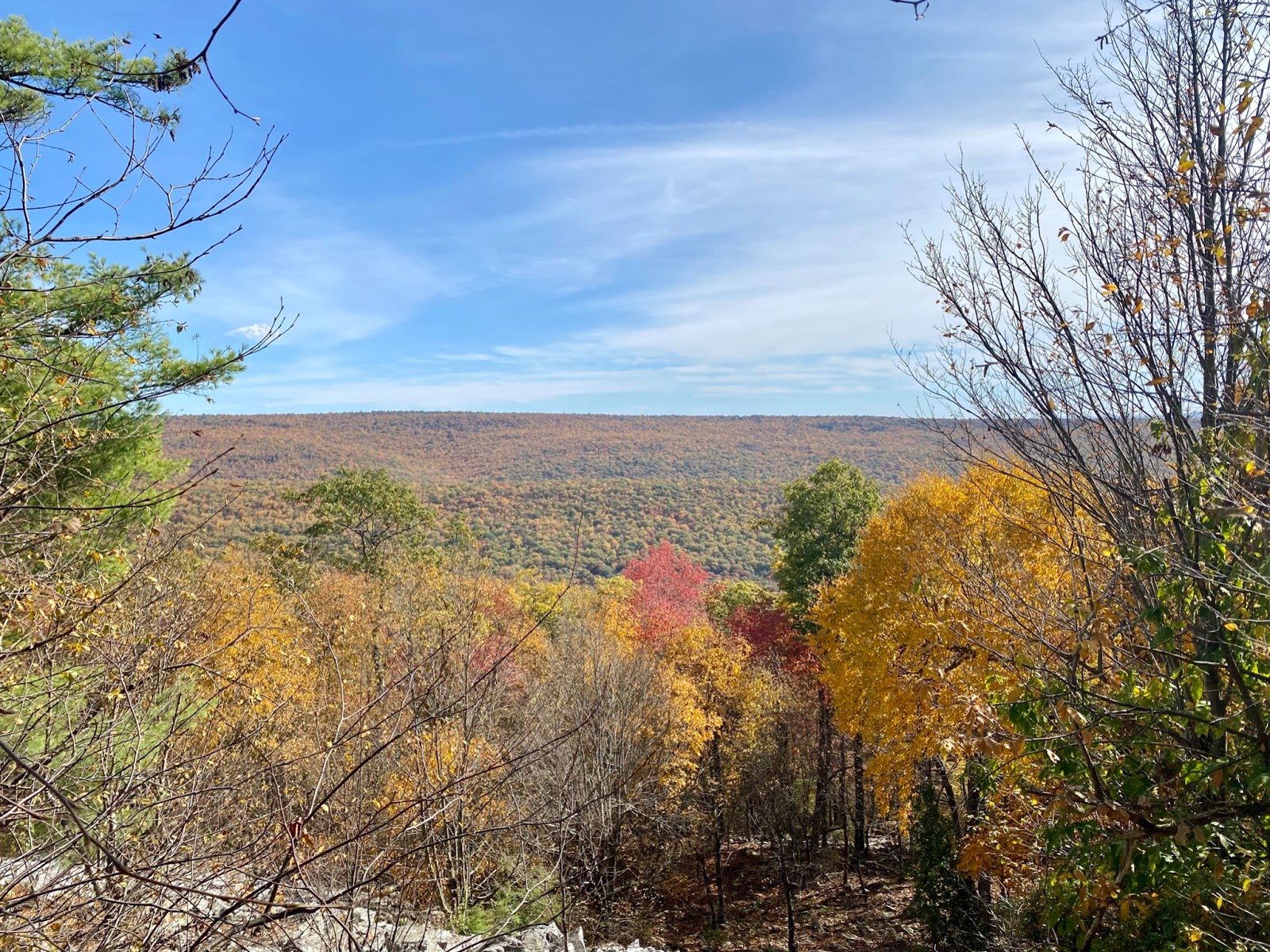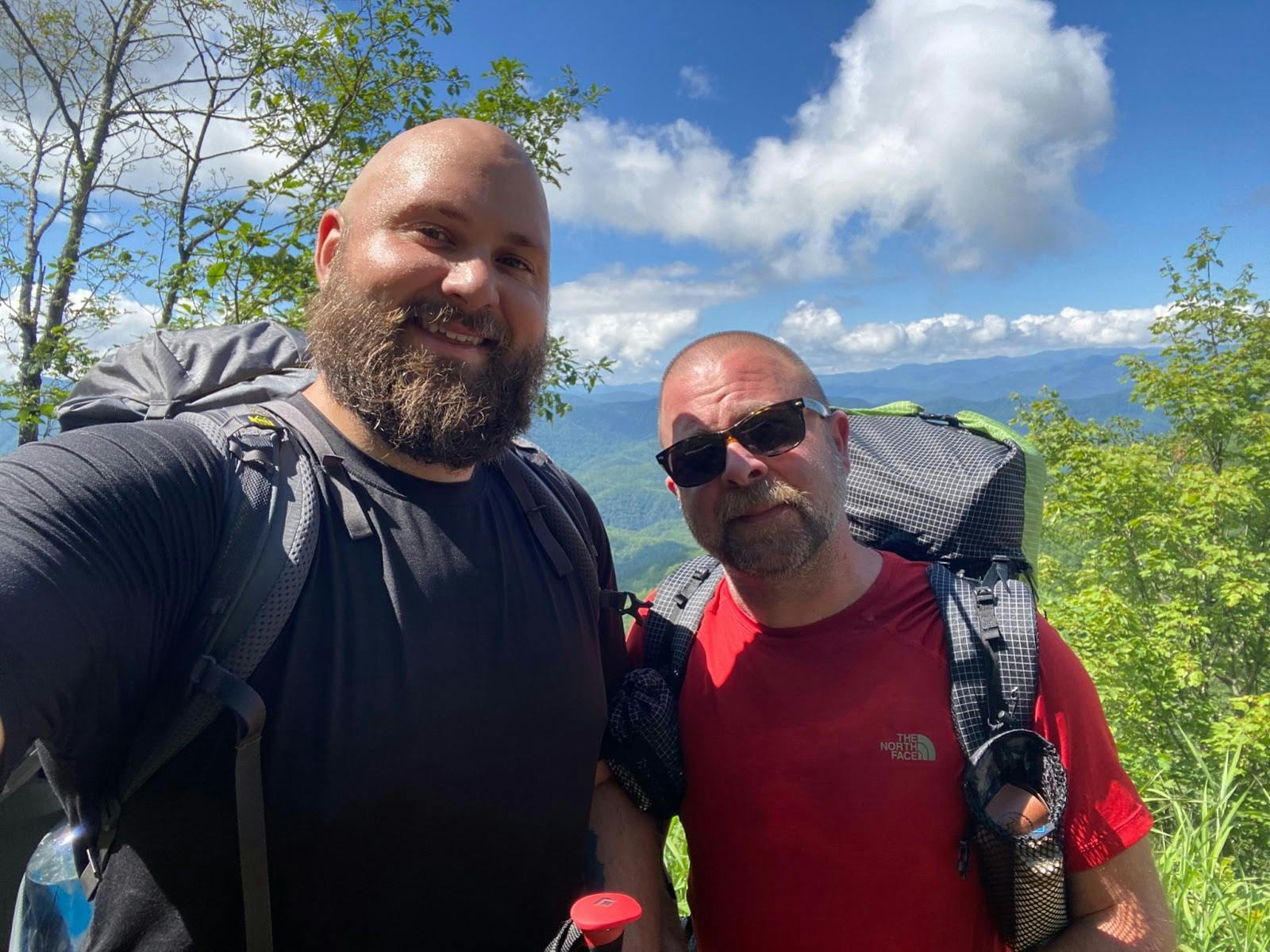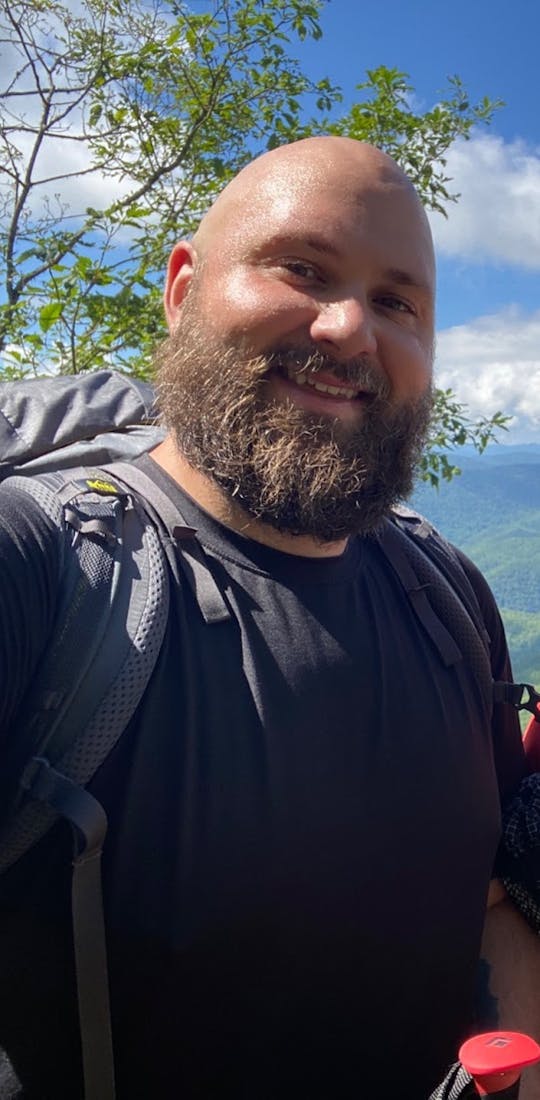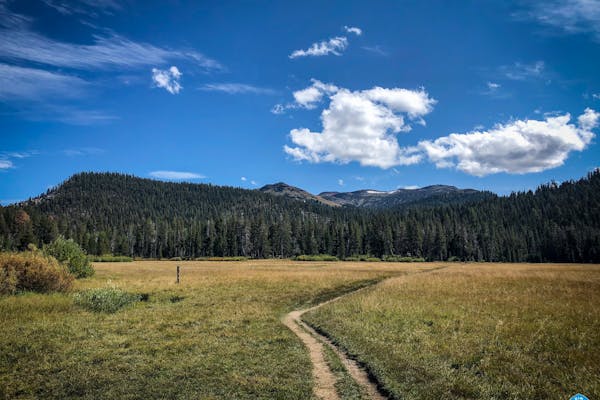Oboz Truist James Evert found passion in hiking later in his life. As a gay man, most of his youth was spent trying to understand his identity; "it was difficult to feel like I 'fit in' with other hikers – an overwhelmingly white and straight group of people. Of course, I would later realize that a vast majority of hikers are some of the most open-minded and caring people you’ll ever meet."
In addition to struggling with identity in his younger years, he also struggled with weight. "Competitive sports just weren’t for me. When I started hiking, I was amazed what I could achieve with my own body." Find him at @buttermilkbearbie on Instagram and on his website, James Hikes.
It’s June - and that means Pride Month is here.
Rainbow flags are flying and multinational corporations are marketing anything with a rainbow on it. So what am I doing to celebrate? Going for a 2,000 mile walk, of course.
I’m James, a 31-year-old gay man who grew up in rural Pennsylvania, currently residing in New Orleans after spending a few years in Chicago. This summer, I’ll be attempting a long distance hike of the Pacific Crest Trail from Walker Pass to the Canada border.
Growing up gay in Central Pennsylvania could have been a lot worse, but thankfully I lived in an open-minded bubble known as Happy Valley. Still, trying to reconcile my identity took up a great deal of mental space when I was younger. It didn’t help that I was also overweight most of my childhood and teenage years. Although I was surrounded by hundreds of miles of hiking trails, they rarely crossed my mind. I attended Penn State University with the mindset that a degree would be my ticket out of this small town and onto something bigger.
My senior year at Penn State, I studied abroad and did some traveling through Europe. I was entranced by the natural beauty and culture in Northern Spain. During my time there, I learned about the Camino de Santiago, a 500-mile trail following ancient pilgrimage routes through Northern Spain and a little bit of France. The trail goes through a lot of towns and most of your nights are spent at hostels, eating home-cooked meals and drinking delicious local wine. There’s even a wine fountain in one town. This sounded like the perfect post-college trip. Although I never made it back to hike the Camino, a little seed was planted somewhere in my mind.
Faced with student loans and a desire to leave my small town, I took the boring-but-stable path and started a corporate job. Eventually I followed my college boyfriend to Chicago and we got married the day after the US Supreme Court legalized gay marriage. Chicago was a wonderful place to spend my twenties exploring my identity as a gay man and for that, I will be forever grateful. Yet I couldn’t help but shake a feeling of emptiness. Somewhere deep inside me I longed for home.

As my marriage failed, old dreams of the Camino resurfaced.
Somewhere along the line, I learned about the Appalachian Trail. I don’t remember when or where, but I was obsessed. I had been so unhappy with my regular adult life that the idea of leaving it all behind and hiking through the wilderness for six months sounded like an absolute dream.
I spent the next three years restructuring my life to make this hike happen. I did lots of practice hikes and learned of other long-distance trails. I realized I was strong and my body could endure more than I knew. Never enjoying competitive sports or finding inspiration at the gym, this realization was extremely empowering for me.

After careful consideration, I ultimately decided to attempt the PCT instead of the AT this year.
Along the way, I plan to reflect on what it means to be an LGBT hiker. Where do diverse hiking communities already exist and how can we promote inclusivity in mainstream hiking culture? How has my position of relative privilege, a white male with a masculine appearance, helped me get to where I am?
I hope you’ll follow my adventure over the next few months, and when official Pride events resume this fall, perhaps you’ll find me walking out of the woods to dance on the streets.




